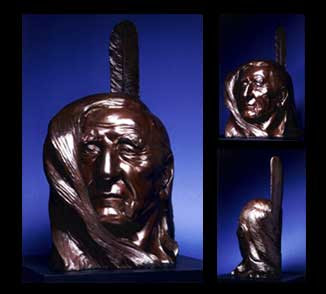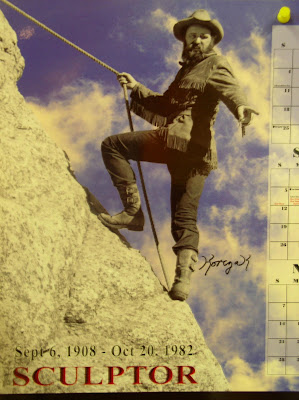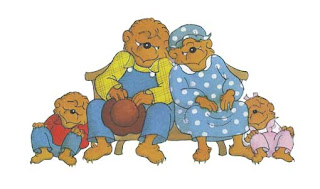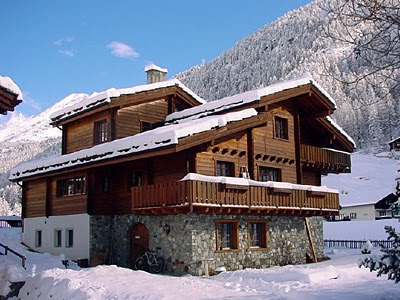MOUNT RUSHMORE!!!!!!!
 It stormed the day we went to Mount Rushmore. Great rivulets of water dyed the gray stone black.The presidents looked considerably less grand and dignified with pools of liquid roping from their mouths and nostrils.
It stormed the day we went to Mount Rushmore. Great rivulets of water dyed the gray stone black.The presidents looked considerably less grand and dignified with pools of liquid roping from their mouths and nostrils.
A fellow visitor and his family stood next to me at the floor-to-ceiling windows in the huge Rushmore cafeteria. They all wore fanny packs and t-shirts that boasted other family trips to various national monuments. “Tourists, ” I mentally sniffed, as if I had been born and raised just next door in the gift shop.
“Look, kids. The mountains are weeping.”
Instantly I was shamed. The man I had written off as the Ugly American had the soul of a poet. He cleared his voice and went on, a little louder this time, so that all of us that stood around could hear the truth and beauty of his words. I leaned in more closely.
“That’s because Obama is in the White House! Har, har, har!”
Mount Rushmore has an interesting history, much of which doesn’t speak of what is best about Americans. Part of a range originally known as “The Six Grandfathers”, the mountain was considered sacred to the Lakota and Cheyenne, and had been deeded in perpetuity to the tribes, along with the rest of the Black Hills region, in 1868. (The Six Grandfathers includes Mount Harney, which I’ll talk about later. I know how much you guys like continuity, so I wanted to be sure to alert you, and tip you off to digging my flow!) That was before miners discovered the lucrative value of the land and its resources, which included timber that could be floated down the Cheyenne and Missouri Rivers, and a multitude of minerals, including, of course, gold. (And lithum! Yum!) The rush was in full swing and growing when a “negotiating” committee went to “talk” to tribal leaders about just giving the Black Hills back, on account of that would be the “right neighborly thing to do, cocksucker.” (NOTE: While I was not actually at this meeting, and therefore had to fabricate this quote, I am assured by HBO’s Deadwood series that the language I am employing is realistic and authentic. Far be it from me to curse gratuitously or to risk offending my readership with obscenities; I’m just all about accuracy, and as such, I seek only to inform you with the utmost respect to veracity and verisimilitude. Plus, if you say it enough, as I found myself compelled to do throughout South Dakota and particularly in the actual town of Deadwood, you find that after awhile the word just rolls off the tongue in a rather pleasing manner…) Colonel John E. Smith recognized the importance of the Hills to the Lakota; in fact, he said that they were the only portion of the reservation “worth anything to them,” and that “nothing short of their annihilation will get it from them.” (NOTE: This quote is real, and comes from a letter from the Colonel to his commanding general, General Ord. It would have been a lot spicier if I had made it up, but as I told you, I’m all about truth in journalism. General Ord was a known cross-dresser and often worked in the saloons of nearby Wyoming. Not really. I made that part up. Interesting though, right?)
I guess I don’t really have to tell you what came next. We waged war and destroyed the indigenous people, stole their land, and called it progress, as it advanced our economic goals. After the land was raped and resources were depleted, the Gold Rush disappeared as quickly as it had begun, and Homesteaders were paid to take the land and farm it. As I mentioned before, many of those claims, and claims of the miners, are still honored today. The mountain that had been known as ‘Cougar Mountain’ ‘Slaughterhouse Mountain’, and Keystone Cliffs’, among other names, became Mount Rushmore, in honor of a lawyer from New York who came on a prospecting mission in 1885. (And do you know who else was on this mission? David Swanzey, who was married to the boring Little House on the Prarie sister, Carrie, who lived in Keystone! See how it all comes back around and ties together?)
The monument was created in order to build tourism for South Dakota. This was the vision of Doane Robinson, a lawyer from Wisconsin, who later became South Dakota’s State Historian. He originally wanted to depict a sort of scope of history thing that would show steps in America’s progress, but that was vetoed when he found his sculptor, Gutzon Borglum. (NOTE: I know it sounds like I made this name up. It is, in its own way, as fantastic a fake name as McLovin. However, I can’t take credit for this one. Somebody actually had an adorable little infant, took one look at him and said proudly, “Gutzon! You are, and shall forever be, Gutzon!”) Mr. Borglum, well-known, respected sculptor and sassy-assed diva, refused to sculpt something with unnamed personages on it, and said that if he had any part of this endeavor, it would have to be of the national and historical significance that was befitting of his work. Borglum himself chose the four presidents who would grace Mt. Rushmore, all of whom were in office during the acquisition of Native American land.
A moment here to speak of ol’ Gutzon. Born in 1885 in St. Charles, Idaho, Gutzon Borglum was proud to be an American, which he defined as being born of American parents. This was a bit ironic, as his own parents were Dutch immigrants. Not only that, they were Mormons, who, in the 1800’s were being jailed left and right for their practice of polygamy. According to a website devoted to Mormon missions, Dearelder.com, http://www.dearelder.com/index/inc_name/Mormon/title2/Mormon_Polygamy,
“The Lord recognized that the Church would not be allowed to progress while it still practiced Mormon polygamy. So in 1890 the Lord commanded the people of the Mormon church to stop practicing polygamy.” Mighty obliging of the Lord, right? Unfortunately, that was too late for Papa Borglum, who had two wives, Gutzon’s birth mother and her sister. Eventually, the senior Borglum tired of Mormonism and of polygamy, or perhaps just of Borglum’s mother. He moved to Omaha, where polygamy was forbidden, and ditched Borglum’s mother, upon which she was never mentioned again. (NOTE: This info came from an ep of PBS’s
American Experience, so you KNOW it’s true!)
Gutzon, an uber-patriot nativist, proved himself once again to be on the side of the right when he immortalized heroes of the Confederacy on Stone Mountain in Georgia. He was an active Freemason, and an active member of the Klan, who were major financial supporters of the Mount Rushmore sculpture.
Funding was always an enormous obstacle for the Rushmore project. Though Doane Robinson had been advocating the idea of the monument for years, it wasn’t until Calvin Coolidge was persuaded to vacation in South Dakota in 1927 that the concept began to look concrete. (Get it? Good one, huh? Mt. Rushmore is actually granite, but who cares.) South Dakotans gifted the president and Mrs. Coolidge with many things, including boots and a cowboy hat, in which Coolidge took to swaggering around the porch. He climbed – but didn’t summit – Mount Harney (What a wussy! Stay tuned for STILL more to come about Mt. Harney! I know! I can hardly wait either!), and tried fly fishing, at which he was an immediate pro, largely because the good Dakotans stocked the lake with fat trout from the local fish hatchery. When Coolidge dedicated the site and presented Borglund with ceremonial drill bits, Borglund asked him to write a 500 word explanation of the site that would also be carved into the mountain.* In 1930, Borglund released a version of Coolidge’s “Entablature” that Borglund had edited. It was widely mocked by literary critics, and though Borglund later admitted that he had changed the presidents words, a rift between Borglund and Coolidge developed. Towards the end of his life, someone asked President Coolidge about Borglund.
“About how far would you say ’tis from here to the Black Hills?” Coolidge asked.
The questioner said it was about 1500 miles.
“Well, y’know….that’s as close to Mr. Borglund as I care to be.” (NOTE: PBS again. I don’t make this stuff up, people!**)
In 1991, President George H.W. Bush officially dedicated Mount Rushmore as a National Monument. Until then, it was known officially only as Giant White Heads on Black Hills.
I tell you what, visiting Mount Rushmore really opened my eyes. Proud to be an American? You betcha! Just not so much at Mt. Rushmore. Good snack shop, though.
*Except of course when I actually do make this stuff up.
**Borglund originally intended to write the Entablature in three languages, English, Latin and Sanskrit, so that future generations would be sure to understand the monument’s import. Unfortunately, by the 1930’s, Sanskrit and Latin were already dead languages, so I guess only REAL Americans (and some Brits, Canadians and Irish folk – I don’t think Scots actually speak English, though they say they do) really needed to understand anyway.
After writing that last post, I had a mighty strong hankerin’ to do two things: finish telling you about the trip I took last summer to the great state of South Dakota, and stand on the corner of a busy street and scream,with the joyful abandon of a drunken banshee, a certain word that will remain untyped in this post. Can you guess what it is? Go on…guess! Perhaps you could if you had something to lubricate your mind a bit, massage the old membrane, if you will… not that membrane and not that kind of massage, Ass Nasty! I’m speaking, of course, of a drink, a restorative beverage, a rum drink perhaps, a rum cocktail, a cockrum, a …uh-oh! I almost wrote it! I was so close! Must not write the word! Must be careful!
If modern Deadwood lacks a bit to be desired, its history is still fascinating, and we loved the tiny Adams Museum – no relation to Mc- which had artifacts like chairs, scissors, hardware, blankets and old, yellowing ledgers behind ropes or under glass.
You can see less famous graves like this:
Ms. DuFran was the most profitable madam in Deadwood, and also had brothels in Belle Fourche and Rapid City. The one in Belle Fourche was called “Diddlin Dora’s” and was advertised as “Three D’s – Dining, Drinking and Dancing – A Place Where you Can Bring Your Mother!”, which is especially convenient if your mother is Elliot Spitzer, Jimmy Swaggart, or Hugh Grant. Calamity Jane worked for Dora DuFran as an occassional cook and maid, and it was from Diddlin’ Dora’s that Jane went off on her final bender. The little devil planter in the corner of the photo is one of four, that represent Dora’s four business establishments. Also buried at Mt. Moriah is Dora DuFran’s beloved husband and her pet parrot, Fred.
All right, my precious co- umm, concubines, that’s about it for Deadwood. My fingers are tired and my mind’s half worn from thinkin’, so I hope you’re satisfied, coc- Caucasians and other racial groups who read this blog. I’m out! Signing off from Deadwood,









